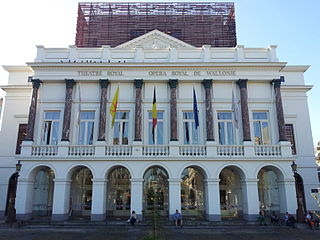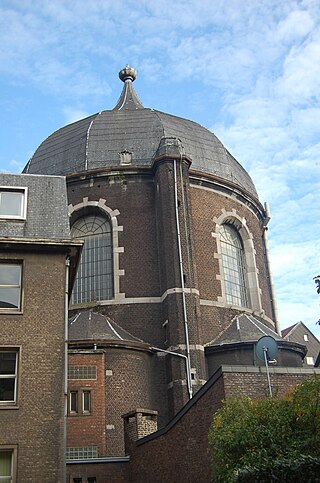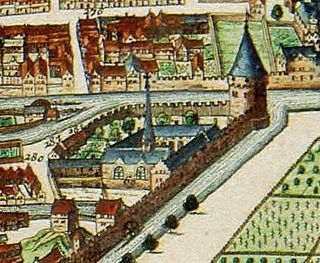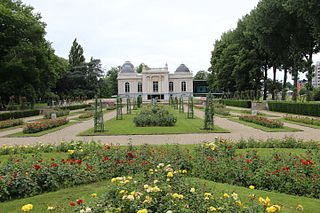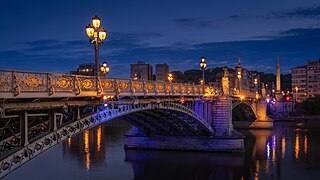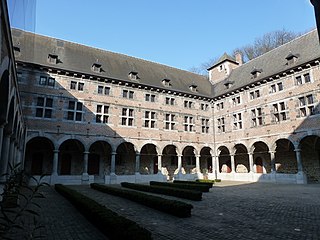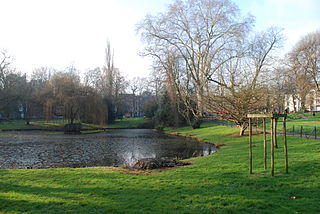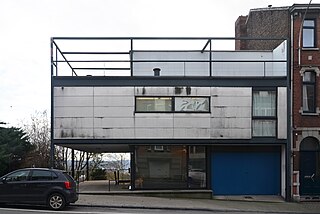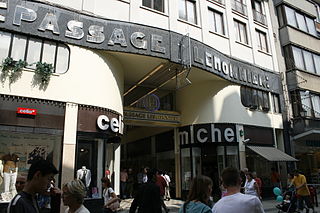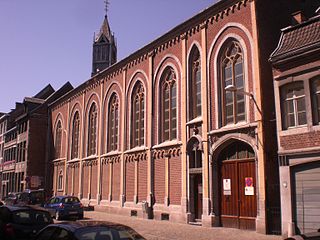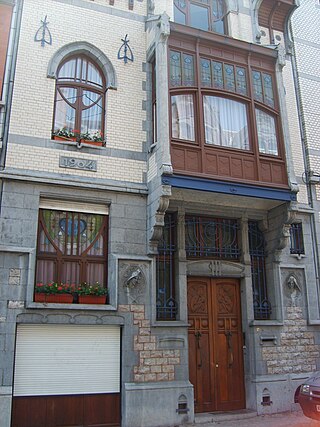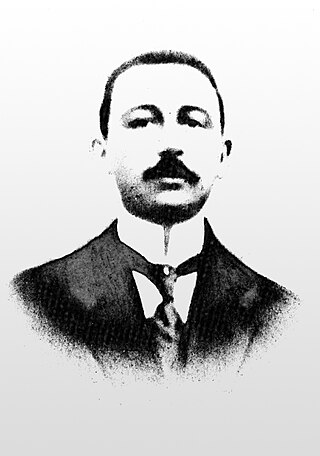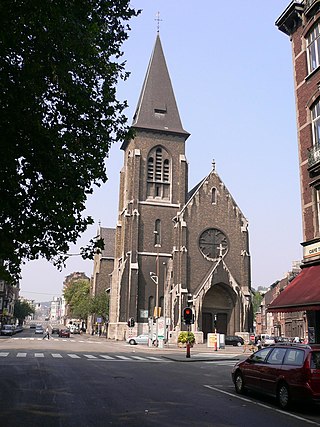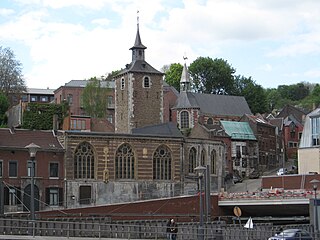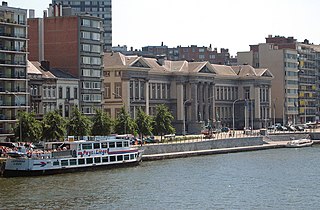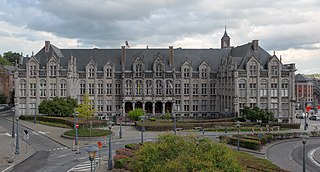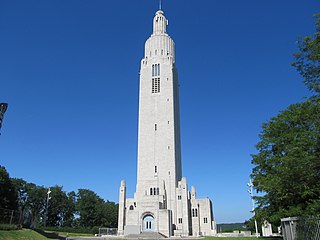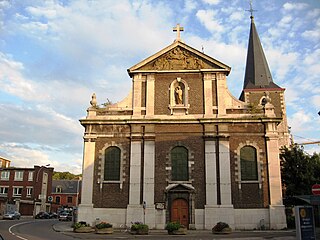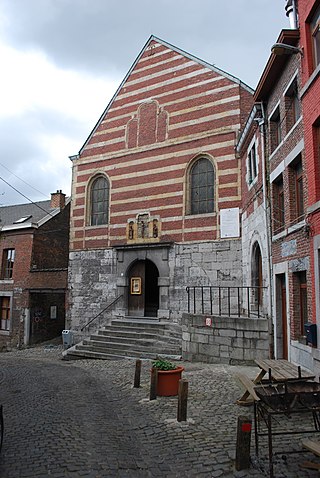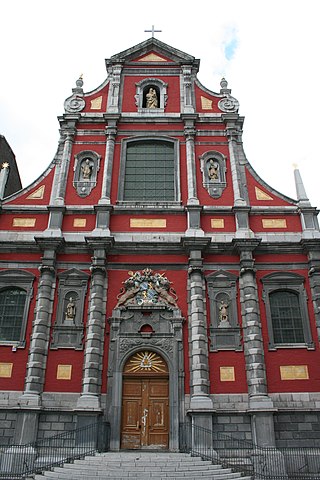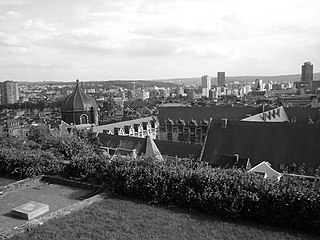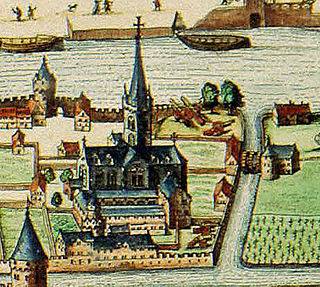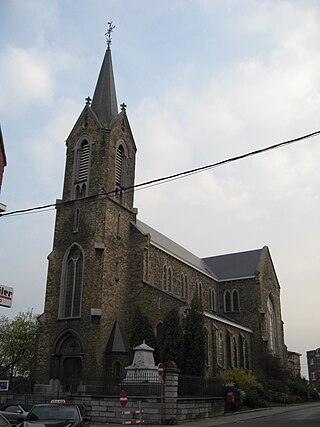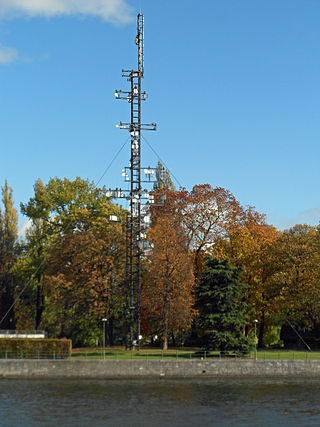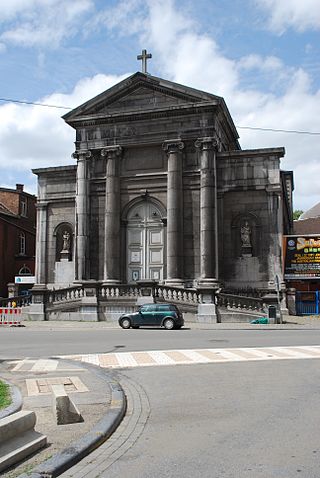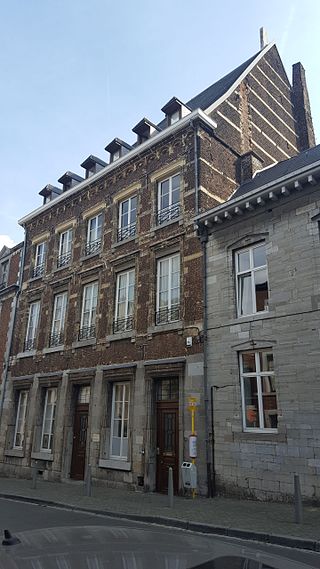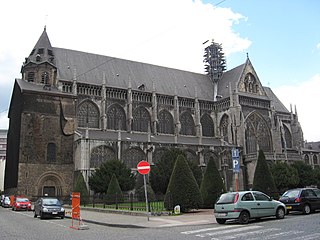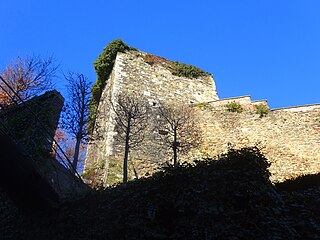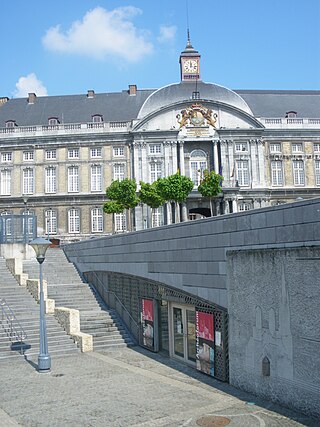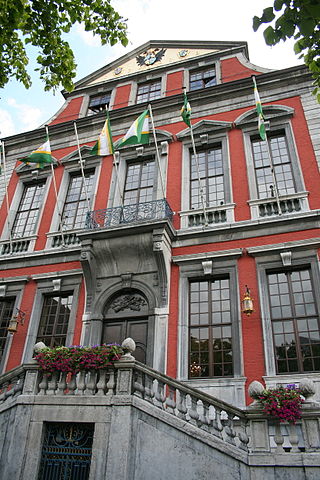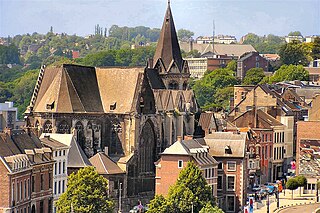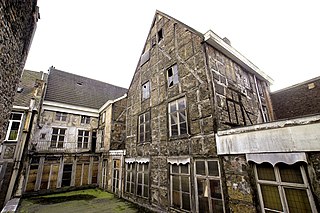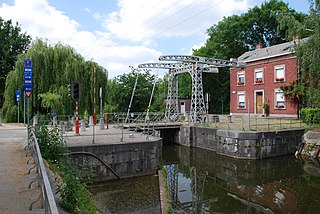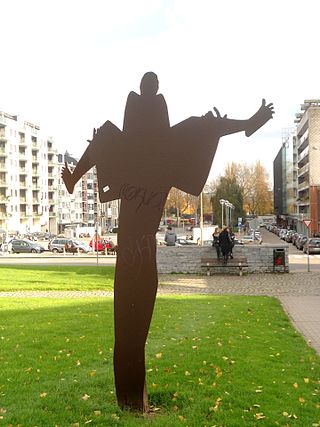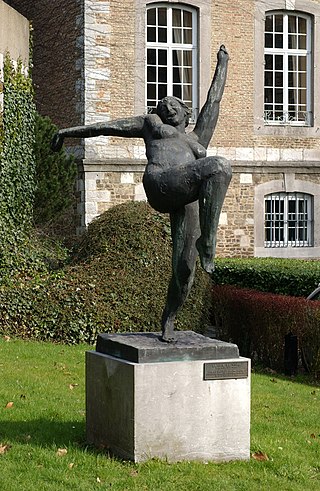46 Sights in Liège, Belgium (with Map and Images)
Legend
Premium Sights
Book tickets, guided tours and activities in Liège.
Guided Free Walking Tours
Book free guided walking tours in Liège.
Welcome to your journey through the most beautiful sights in Liège, Belgium! Whether you want to discover the city's historical treasures or experience its modern highlights, you'll find everything your heart desires here. Be inspired by our selection and plan your unforgettable adventure in Liège. Dive into the diversity of this fascinating city and discover everything it has to offer.
Sightseeing Tours in LiègeActivities in LiègeThe Opéra royal de Wallonie is an opera house located on the Place de l'Opéra, in Liège, Belgium. Together with La Monnaie and the Vlaamse Opera, the Opéra royal, as it is colloquially known, is one of the three major opera houses in Belgium. From the beginning, the institution occupied the Théâtre royal in Liège, a building loaned by the city.
Wikipedia: Opéra Royal de Wallonie (EN), Website, Heritage Website
The Church of Saint-André is a church in Liège located on the Place du Marché. It was from the fourteenth century until the French Revolution, with Saint-Gangulphe, the church of the commandery of the Teutonic Order of Saint-André, where the Grand Commander of the Grand Commandery of the Old Rushes of Alden-Biezen resided.
Wikipedia: Église Saint-André de Liège (FR), Heritage Website
3. Ancien couvent des Récollets
The Convent of the Recollets or Convent of Jerusalem was a convent located in Liège, founded at the end of the fifteenth century and belonging to the Order of the Recollets Friars Minor, Franciscan Order. This convent, located in the Outremeuse district, rue Georges Simenon, along the walls of the City, housed up to more than 80 priests, and participated in the life of the City of Liège until the French Revolution. Completely renovated, the building currently houses the Georges Simenon youth hostel.
4. Parc de la Boverie
The Parc de la Boverie is a park of the city of Liège located between the Meuse and the Dérivation in the administrative district of Outremeuse. It is connected to the Quai Mativa by the Mativa footbridge, spanning the Dérivation, and to the Quai de Rome by the La Belle Liégeoise footbridge across the Meuse.
5. Pont de Fragnée
The Fragnée bridge, nicknamed the Pont des Anges, is a bridge in the city of Liège crossing the Meuse at its confluence with the Ourthe, and at the start of the Dérivation. The part spanning the Ourthe is called the Pont de Fétinne.
6. Musée de la Vie Wallonne
The Museum of Walloon Life was founded in 1913. It is one of the richest ethnology museums in the Walloon Region, it is located in the former miners' convent of Liège. While its collections bring together everything that has made and still makes life in Wallonia, it offers, through its journey, an original and complete look at what Wallonia and its inhabitants are like, from the nineteenth century to the present day. A puppet theatre brings to life Tchantchès, Charlemagne, Nanesse, Roland and characters from the traditional Liège repertoire.
7. Jardin botanique
The Botanical Garden of Liège is the former botanical garden of the University of Liège, Belgium. Located not far from the city centre, its park offers a green setting to the inhabitants of the district. There are some rare species of trees from all continents.
8. Maison Mozin
The Mozin House is a single-family dwelling house located at 402, rue de Campine, in the Sainte-Walburge district of Liège and built between 1957 and 1958. His client, Jules Mozin, is also the architect, who designed his personal home.
9. Passage Lemonnier
The Passage Lemonnier is a covered walkway in the centre of Liège in Belgium that houses shops of all types. It connects the Vinâve d'Île to the rue de l'Université and is crossed, in its centre, by the rue Lulay-des-Fèbvres. Built between 1836 and 1838 by the architects Louis-Désiré Lemonnier and Henri-Victor Beaulieu, the Passage Lemonnier, whose name was drawn by lot between the two master builders, is the oldest covered commercial passage in Belgium; it preceded by eight years the Royal Galleries of Saint-Hubert by the architect Jean-Pierre Cluysenaar, inaugurated in Brussels in 1847.
10. Aquarium & Museum
The Aquarium-Museum is a museum of the University of Liège dedicated to both the aquatic world and the heritage of the natural sciences. Founded on 12 November 1962 within the Institute of Zoology in Liège, which also houses the Maison de la Science, it welcomed its millionth visitor in 1991 and expects the 4,000,000th in 2026!
11. Chapelle des Filles de la Croix
The Capucine convent, located outside the castle in Liège, was founded in 1626, at the corner of the Impasse du Champion. The convent church was built in 1646. Sold during the Revolution, it was once again occupied by the Daughters of the Cross after having been private property. It is currently a normal school and Marie-Thérèse's middle school.
12. Musée Wittert
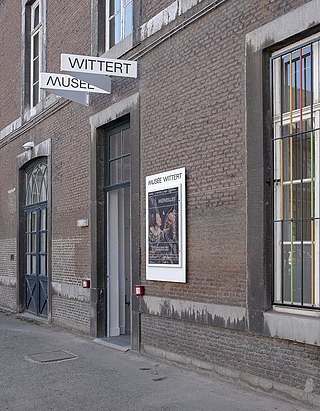
The Wittert Museum, the art museum of the University of Liège, preserves more than 65,000 works of various kinds. Located in one of the oldest wings of the university, on the Place du 20-Août in Liège, it changed its name in 2018 and was renovated. New signage has been installed and the exhibition spaces have been completely redesigned so that the semi-permanent exhibition "Wonders and Curiosities of the Art Collections of the University of Liège" can be presented alternately with temporary exhibitions.
13. Maison Piot
The Maison Piot, also known as the Maison des Francs-Maçons by the neighbourhood, is undoubtedly one of the most accomplished achievements of the art nouveau style in Liège. It is the work of the architect Victor Rogister, one of the best representatives of Art Nouveau in Liège for Henri Piot, director of a mechanical factory. The sculptures were made by Oscar Berchmans.
14. Église Saint-Lambert

The Church of Saint-Lambert de Grivegnée is a religious building in Liège (Belgium), used for Catholic worship until 2015, then for Protestant worship since 2017. Built in the Gothic Revival style at the end of the nineteenth century, it was part of the former convent of the Oblate missionaries, who have now left. It was the most important Catholic parish church in the Grivegnée district. It is located on rue du Beau-Mur in the Bonne-Femme district, at the foot of the hill of the Fort de la Chartreuse.
15. Collégiale Saint-Barthélemy
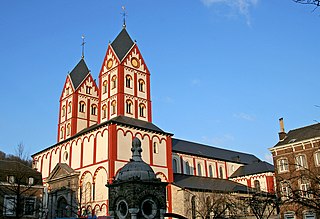
The Collegiate Church of St. Bartholomew is a Roman Catholic collegiate church in Liège, Belgium. Founded outside the city walls, it was built in coal sandstone, starting in the late 11th century and lasting until the late 12th century. It underwent, like most ancient religious buildings, modifications through the centuries. Nevertheless, the Meuse Romanesque—Ottonian architecture character of its architecture remained deeply rooted. The 18th century saw the addition of two more aisles, the opening of a neoclassical portal in the walls of the westwork, and the French Baroque redecoration of the interior. The interior of the western section has recently been restored back to the original style.
16. Musée des Transports en commun de Wallonie
The Museum of Public Transport of Wallonia is a museum where various trams, trolleybuses and buses, past and present, are exhibited to the public. The vehicles on display have been driven in the Belgian province of Liège. Trams of the Aachen transport company also ran in Belgium after the First World War, after the annexation of the German area around Eupen.
Wikipedia: Museum voor het Openbaar Vervoer van Wallonië (NL), Website
17. Maison Comblen
The Comblen House is an art nouveau style dwelling located in Liège, Belgium. It is not in itself a complete art nouveau construction, but the transformation of a neo-classical style dwelling into an art nouveau building. It is considered one of the most beautiful art nouveau buildings in Liège, both for its façade and for its interior, which is articulated under a skylight.
18. Dieudonné Lambrecht
Dieudonné Lambrecht (4 May 1882 – 18 April 1916) was an intelligence agent during the First World War. He was the founder and leader of the Allied intelligence network Lambrecht, which was taken over by Walthère Dewe. This White Lady network was reactivated during the Second World War under the name Clarence.
19. Église du Saint-Sacrement
The Church of the Blessed Sacrament is a Roman Catholic church in Liège, Belgium. Consecrated in 1527 and rebuilt by Jacques-Barthélemy Renoz in 1750, it was part of the Augustinian convent before it was suppressed after the French Revolution on September 1, 1796.
Wikipedia: Église du Saint-Sacrement de Liège (FR), Heritage Website
20. Église Saint-Pholien
The Church of Saint-Pholien is a Roman Catholic church located in the Outremeuse district of Liège, Belgium, at the eastern end of the Boulevard de la Constitution. A first church of the twelfth century was rebuilt several times. The current building dates from 1914. The church is placed under the patronage of Saint Feuillen de Fosses.
21. Église Saint-Servais
The Church of Saint-Servais is a Roman Catholic church located on rue Fond Saint-Servais in the Pierreuse district near the Liège-Saint-Lambert train station in Liège, Belgium. The first church was founded in the tenth century. It has been rebuilt and modified several times over the centuries and is one of the oldest churches in the city.
Wikipedia: Église Saint-Servais de Liège (FR), Heritage Website
22. Maison de la science
The Maison de la science is a museum of the University of Liège, established in Liège, Belgium, offering a series of demonstrations, automated showcases whose aim is to introduce people to science while having fun. It highlights the concrete applications of the discoveries made in biology, chemistry and physics.
Wikipedia: Maison de la science (FR), Website, Opening Hours
23. Palais Provincial
The Palace of the Prince-Bishops is a historic building situated on the Place Saint-Lambert in the centre of Liège, Belgium. It was the residence of former Prince-Bishops of Liège and once faced the monumental Cathedral of St. Lambert. It now houses the Palace of Justice of Liège and the Provincial Palace, i.e. the government building of Liège Province.
24. Mémorial Interallié
The Interallied Memorial at Cointe is a war memorial built after World War I in Liège, Belgium. The memorial is a complex consisting of the Sacré-Cœur church as a religious building and a cenotaph with a tower as a secular monument.
25. Église Saint-Remacle-au-Pont
The church of Saint-Remacle-au-Pont, located in the district of Amercœur, is one of the oldest parish churches in Liège. It was so named to distinguish it from Saint-Remacle-au-Mont, located near Saint-Martin.
Wikipedia: Église Saint-Remacle-au-Pont de Liège (FR), Website, Heritage Website
26. Chapelle Saint-Roch
The Chapel of Saint-Roch en Volière is a Catholic religious building built in 1558 for the convent of the Cellite friars in Liège. The chapel was renovated and relics of Saint Roch were installed in 1682 and Saint Alexis in 1685.
27. Église Notre-Dame-de-l'Immaculée-Conception
The Church of Our Lady of the Immaculate Conception, also known as the Church of the Redemptorists, the Church of the Carmelites and the Church of Saint-Gérard, is a seventeenth-century Baroque-style church located in the Hors-Château district of Liège. It was the church of the former convent of the Discalced Carmelites.
Wikipedia: Église Notre-Dame-de-l'Immaculée-Conception de Liège (FR), Heritage Website
28. Église du Sacré-Cœur et Notre-Dame-de-Lourdes
The Church of the Sacred Heart and Our Lady of Lourdes is located on the heights of Liège in the Cointe district. It is part of the Interallied Memorial. It is often referred to as a basilica but it has never received this title. This popular confusion is certainly due to its imposing character and unusual style.
Wikipedia: Église du Sacré-Cœur et Notre-Dame-de-Lourdes (FR)
29. Terrasses des Minimes
The Terrasses des Minimes is a green space in Liège that is part of the Coteaux de la Citadelle complex. An integral part of the historic centre of the city, it is a rich place from the point of view of historical heritage.
30. Manège Fonck
The Abbey of Val des Écoliers de Notre-Dame de l'Isle in Liège is a former abbey of the Principality of Liège, founded in the thirteenth century by the Écoliers du Christ and located in the Liège district of Outremeuse, between the Meuse and the diversion. Secularized during the Liège revolution, it was converted into a hospital and then into a barracks. Since 2000, the site has been occupied by the École supérieure des arts Saint-Luc de Liège.
Wikipedia: Abbaye du Val des Écoliers de Liège (FR), Clt Website, Website
31. Église Sainte-Walburge
The Church of St. Walburga is a Roman Catholic church located in the Sainte-Walburge district on the heights of the city of Liège, Belgium. The church, built in 1879, is the second building to succeed an old maladrerie chapel erected in the fourteenth century. It is the place of worship of the Catholic parish.
32. Tour cybernétique
The Cybernetic Tower of Liège is a monumental work by the Franco-Hungarian artist Nicolas Schöffer from 1961. It is located in the Parc de la Boverie in Liège, Belgium, near the Palais des Congrès, and was reopened in May 2016, more than 45 years after it had been deactivated. It is the artist's most monumental work.
33. Église Sainte-Véronique
The Church of Sainte-Véronique is a Roman Catholic church in Liège, Belgium. Located on Place Sainte-Véronique in the Avroy district, the current church was built in 1848, replacing a seventeenth-century building whose foundations date back to the Middle Ages.
34. Hôtel van den Steen
The Hotel van den Steen or Hotel van den Steen de Jehay is a sixteenth-century mansion located in Liège at Mont Saint-Martin, Belgium. For more than two centuries, it belonged to an illustrious family from Liège: the van den Steen family.
35. Église Saint-Jacques
St. James's Church is a Roman Catholic church located in the center of Liège, Belgium. Originally the abbey church of Saint James Abbey, founded in 1015 by Prince-Bishop Balderic II, successor of Notker, it later became Saint James's Collegiate Church, following the destruction of Saint Peter's Collegiate Church. After the Concordat of 1801, Saint James became a parish church. The main cloister of the abbey was transformed into a public park, and the abbey buildings were demolished.
36. Tour aux Moxhons
The Moxhon Tower, also known as the Moxhon Tower or the Moxhon Tower, is a building located in the Liège district of Saint-Laurent between Mont Saint-Martin and Thier de la Fontaine. This tower is the only one preserved among those that were part of the first ramparts of the city of Liège.
37. Archéoforum
The Archéoforum is an archaeological museum on place Saint-Lambert in Liège in Belgium. It is centered on the ruins of Saint Lambert's Cathedral and also includes the remains of a Gallo-Roman villa as well as displaying objects from the Mesolithic onward.
38. Hôtel de ville de Liège
The Hôtel de Ville, also known as La Violette, is the town hall of Liège, Belgium. It is located on the Place du Marché, close to the Place Saint-Lambert, in the city centre. Built in 1714 in the Mosan Baroque style, it has a very rich interior and has been listed as 'exceptional heritage of Wallonia' since 2002.
39. Collégiale Sainte-Croix
The Collegiate Church of the Holy Cross is a Roman Catholic church in Liège, Belgium, located on the Place Verte at the corner of the Rue Sainte-Croix and the Rue Haute-Sauvenière. It was founded between 976 and 986 by bishop Notger and held the original St Hubert's Key, previously in the treasury of St. Peter's Church. Previously a collegiate church, its chapter of secular canons was suppressed in 1797 following the Liège Revolution. The church itself was handed back for use as a worship space in 1802.
Wikipedia: Collegiate Church of the Holy Cross, Liège (EN), Website
40. Basilique Saint-Martin
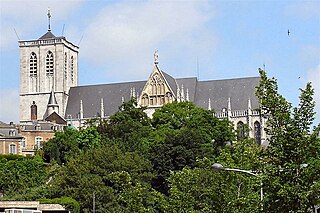
St. Martin's Basilica is a Roman Catholic basilica situated on the Publémont hill in the city centre of Liège, Belgium. It was initially built as a Romanesque structure in the 10th century, which in 1246 held the first celebration of an annual 'Fête-Dieu', the festival later known as Corpus Christi. This structure was replaced by a Gothic building in the 16th century. Up until the Liège Revolution, it was one of the seven collegiate churches of Liège.
Wikipedia: St Martin's Basilica, Liège (EN), Website, Heritage Website
41. La Boverie
La Boverie is a museum in the city of Liège in Belgium. It opened in May 2016. It is housed in the former Palais des beaux-arts de Liège, built in the Parc de la Boverie for the Liège International in 1905. The building previously housed the prints and drawings collections (1952-1980) of the city's Musée des Beaux-Arts and the Walloon art collections of the city's Académie royale des beaux-arts (1970s-1980), before becoming the Musée d'art moderne from 1980 to 2011. MMAC was merged with the prints, drawings and Walloon collections in 2011 to form a new single collection known as the 'musée des Beaux-Arts'.
42. Maison du Léopard
The Leopard House dating from the 15th century is one of the oldest half-timbered civil buildings preserved in almost its entirety in Wallonia. Located in Liège, Belgium, it is located between Féronstrée and Rue des Airs, a few dozen metres from the Place du Marché.
43. Pont Marcotty
The Pont Levant des Aguesses, or Pont Levant Marcotty or simply Pont Marcotty, is a drawbridge located over the Canal de l'Ourthe. The structure was built in 1852 and classified as a monument on 20 May 1983.
44. Jardins Jean-Bernard Lejeune
The Jean-Bernard Lejeune Garden is a garden in the city of Liège, Belgium, laid out in the early 1970s. Crossed by the rue Louvrex, it is located not far from the city centre, above a tunnel serving as an exit to the A602-E25 motorway.
45. Mémorial Albert Ier
The Albert I Memorial stands at the tip of the island of Monsin, which separates the Meuse from the Albert Canal downstream from Liège. It was inaugurated by Leopold III in August 1939 in memory of Albert I, who had himself inaugurated the canal works on 31 May 1930. The architect was Joseph Moutschen.
46. Musée en plein air - Sart Tilman
The Sart Tilman Open-Air Museum of Contemporary Art is a museum of the University of Liège. Founded in 1977, it houses a collection of a hundred monumental open-air works on the 700 hectares of the University of Liège's estate at Sart Tilman. The Sart Tilman Open-Air Museum of Contemporary Art is subsidised by the Wallonia-Brussels Federation and supported by the University of Liège.
Share
How likely are you to recommend us?
Disclaimer Please be aware of your surroundings and do not enter private property. We are not liable for any damages that occur during the tours.
